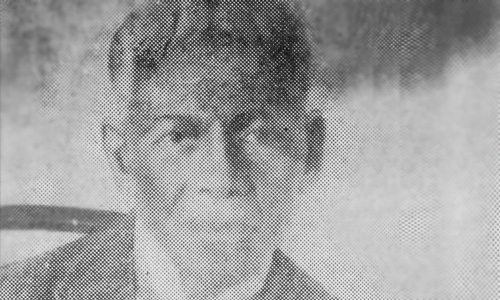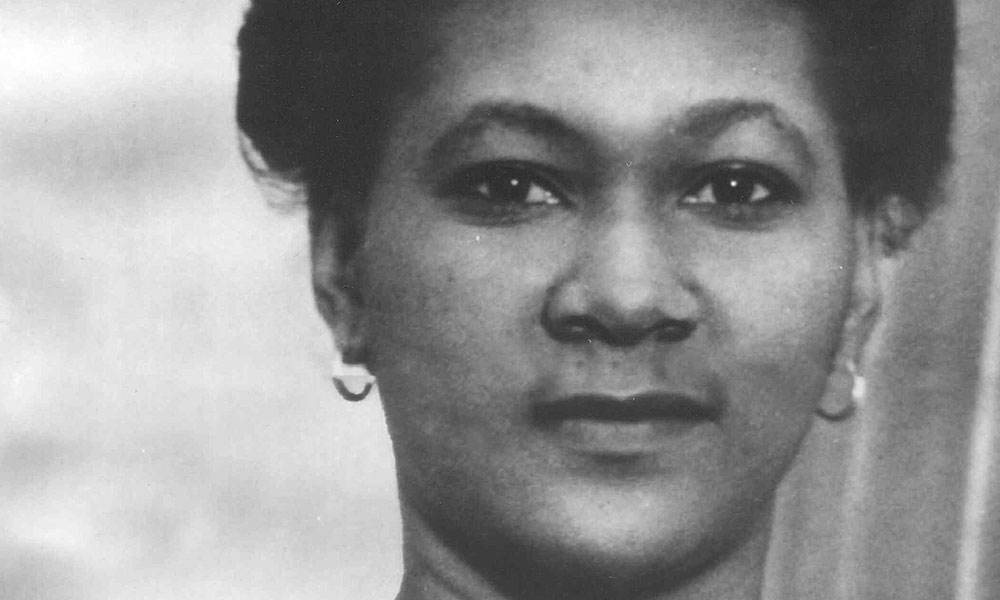
William Austin Harrington Seaton was born on 6 December 1860 at Sandy Point. His parents were both trained primary school teachers so he received his early education at home. At nineteen he was offered the charge of the St. Augustine’s Infant School located at the Figtree end of Pump Bay.
Young William started taking an interest in blacksmithing hoping that it would lead to qualifications in mechanical engineering. However, he was of delicate health and his parents discouraged him from pursuing this career. Instead he practiced the less physically strenuous trades of tailoring and shoemaking becoming especially proficient in the latter. In 1883 Seaton was invited to St. Thomas to join a relative who intended to proceed to Panama where the Canal was being cut by the French. But this plan was soon abandoned as health conditions in the canal zone left much to be desired. He therefore opted to stay in the Virgin Islands and practice his trade.
While in St. Thomas he became a chorister and Sunday School teacher at All Saints Anglican Church. Through the recommendation of the rector he was able to find employment as a clerk at the British Consulate. A few month later the sexton at All Saints died and Seaton was persuaded to take on the supervisory role with an assistant to do the daily tasks. At this time the Danish Government had decided to increase the staff employed at the schools for boys and Seaton secured the post of second master at Dober. Eventually he was licensed as a lay reader of the Diocese of Antigua and had to give up his teaching post. However he did keep in touch with educational work and when the Headmistress and her assistant at the Dober Girl’s School went on leave he was asked to fill in for both. He was also often asked to accompany the Inspector of schools on his rounds. Temporarily, he filled the position of Head Teacher at St. George, Tortola but refrained from accepting the post when it was offered to him as a permanent position. He later joined the staff of the Society for the Propagation of the Gospel and was appointed catechist in charge of St. Mary, Virgin Gorda. This meant that he had to function as Head Master of the Primary School and Registrar of Births and Deaths.
In 1893 Seaton returned to St. Kitts to visit his mother, his father having died in 1887. Finding her in poor health, he decided to stay and work with Archdeacon Dodsworth at St. George’s. On the 13th November 1893 he married Priscilla Lavinia Greene-Cleghorn, widow of Thomas Cleghorn. Together they had three children but only the two girls survived, the son having died at birth.
Seaton worked with Archdeacon Dodsworth as his assistant for about a year and then was given the appointment to run the school on Victoria Road. He was a member of the Anglican Church throughout his life and despite many commitments he was seldom absent from Sunday service.
Eventually he was able to enter the commercial field an work for various companies. He was employed in Dominica by the Mondesire Co. Then he returned to St. Kitts and joined the Pickford and Black Steamship Company as Assistant Purser. Later he worked for the firm of J. Ferara until that business wound up. Following the death of Richard Cable in 1915 William Seaton was invited to join the editorial board of The St. Kitts-Nevis Daily Bulletin but because of differences of opinions between himself and the proprietors he terminated the engagment seven months later. Seaton then joined the firm of E. Periera as Assistant Manager and Accountant. By 1928 he had risen to the position of managing director, a post he held until 1931 when the Depression brought it to an end
Seaton earned widespread admiration for his activities on behalf of the Mutual Improvement Society. He was one of the founders that brought the society into existence in 1901. In 1911 he became the editor of The Reporter, the Society’s publication. For more than twenty years Seaton worked hard at keeping the MIS alive. In the 1920s and 1930s he found strong support from Donald F. Matheson and Robert J. Berridge. Together they were seen as a team of sound, honest and wise men who had gained their wisdom through experience. They were the stabilising influence for an upcoming, ambitious generation of young men which included J. Matthew Sebastian, A St. Claire Podd, Hubert Dinzey and J. W. Blackett. In an article published in 1951 on the occasion of the Societies fiftieth anniversary, Edward Margetson described Seaton as the ‘Master Mind’ of the MIS. Commenting on the many times that Seaton had to serve in the Presidency or the Chairmanship of the Society Margetson wrote: It gave a sense of safety to have his finely balanced judgement presiding over our deliberations .
Margetson went on to describe Seaton’s dedication to the success of the Society. He spent his evenings dealing with correspondence and writing articles for The Reporter, the monthly paper of the MIS which he edited. For nights preceding the publication of each issue Mr. Seaton would work till near dawn writing, correcting, sorting, ordering. One wondered how long his physical constitution would bear the strain...Contributions by members were few and far between, which meant that the editor himself was compelled to produce a huge volume of the material required to maintain, not only the standard of the paper, but also its size.
William Seaton was also a Founder of the St. George’s Palm Lodge in 1912 and of Cairo HH. Of Ruth at Sandy Point. In 1917 Seaton was one of the organisers of a new trade union. The police, who saw him as “a man of very considerable intelligence and moderate in conduct and views”, was surprised at his association with Nathan and Wilkes. Seaton said that his reason for his involvement in the Union was a desire to “better the condition of the labouring classes.” The hostility of the Administration, a promise that labourers’ wages would be increased, as well as his reservations regarding some of his colleagues brought Seaton’s involvement in the Union to a quick end.
In 1918 he was Honorary Secretary of the Representative Government Association and when that disappeared he became a very active member of the new Taxpayer’s Association. In 1932 he joined the Workers’ League and accompanied Thomas Manchester to the West Indies Conference in Dominica. Seaton served the League as Vice President and Secretary until his death in 1938.




